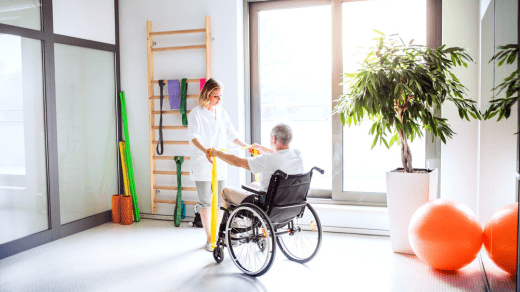Rehabilitation and Community Support: Building a Stronger Future

Rehabilitation and Community Support: Building a Stronger Future
Rehabilitation, when supported by the community, plays a crucial role in an individual’s recovery and well-being. In this discussion, we’ll explore 15 pros and 15 cons of rehabilitation and community support, emphasizing the significance, benefits, and challenges associated with this collaborative approach.
Pros of Rehabilitation and Community Support:
- Holistic Well-Being: Community support enhances physical, mental, and emotional well-being.
- Improved Quality of Life: Rehabilitation with community backing results in an improved overall quality of life.
- Customized Treatment: Treatment plans are tailored to individual needs and community resources.
- Physical Therapy: Rehabilitation includes physical therapy to improve mobility and functionality.
- Mental Health Support: Emotional support from the community aids individuals in coping with the recovery process.
- Social Interaction: Group therapy or support programs promote social engagement and emotional well-being.
- Cultural Sensitivity: Community support often accounts for cultural differences in care.
- Assistive Devices: Rehabilitation experts recommend and provide assistive devices to aid daily living.
- Family Education: Community members receive education on how to support their loved ones during recovery.
- Pain Management: Strategies for managing pain and discomfort are addressed in rehab.
- Mental Resilience: Rehabilitation equips individuals with mental resilience to face life’s challenges.
- Functional Restoration: Rehabilitation aims to restore and optimize functionality.
- Coping Strategies: Individuals learn effective coping mechanisms for life’s challenges.
- Relapse Prevention: Community support helps in reducing the risk of relapse or setbacks.
- Empowerment: Rehabilitation and community support empower individuals to take control of their health.
Cons of Rehabilitation and Community Support:
- Complexity: Managing community support in rehabilitation can be complex.
- Time-Consuming: Rehabilitation programs may require a significant time commitment.
- Financial Costs: Medical bills, therapy expenses, and potential loss of income can be substantial.
- Emotional Intensity: The recovery process and managing community relationships can be emotionally taxing.
- Privacy Concerns: Rehabilitation with community involvement may pose privacy concerns for some individuals.
- Resistance to Treatment: Some individuals may resist rehabilitation, delaying recovery.
- Limited Access: Not all individuals have equal access to high-quality rehabilitation services with community support.
- Dependency on Caregivers: Some individuals may become dependent on support systems, both emotional and practical.
- Frustration: Slow progress or setbacks can be frustrating for patients, community members, and providers.
- Invasive Procedures: Some forms of rehabilitation may involve invasive medical procedures.
- Lack of Long-Term Care: Some individuals may require ongoing support beyond rehabilitation.
- Support Requirements: Maintaining progress and community relationships demands ongoing support and effort.
- Family Dynamics: The dynamics within families and communities can be strained during rehabilitation.
- Relapse Risk: Even after successful rehabilitation, there is a risk of relapse or setbacks.
- Emotional Strain on Community: Community members may experience emotional strain in supporting the rehabilitation process.
Rehabilitation with community support is a collaborative effort that contributes significantly to an individual’s recovery and future well-being. Balancing the benefits and challenges of community involvement in rehabilitation is essential to ensure that individuals receive comprehensive care that addresses their physical, mental, and emotional needs while building a stronger future.







